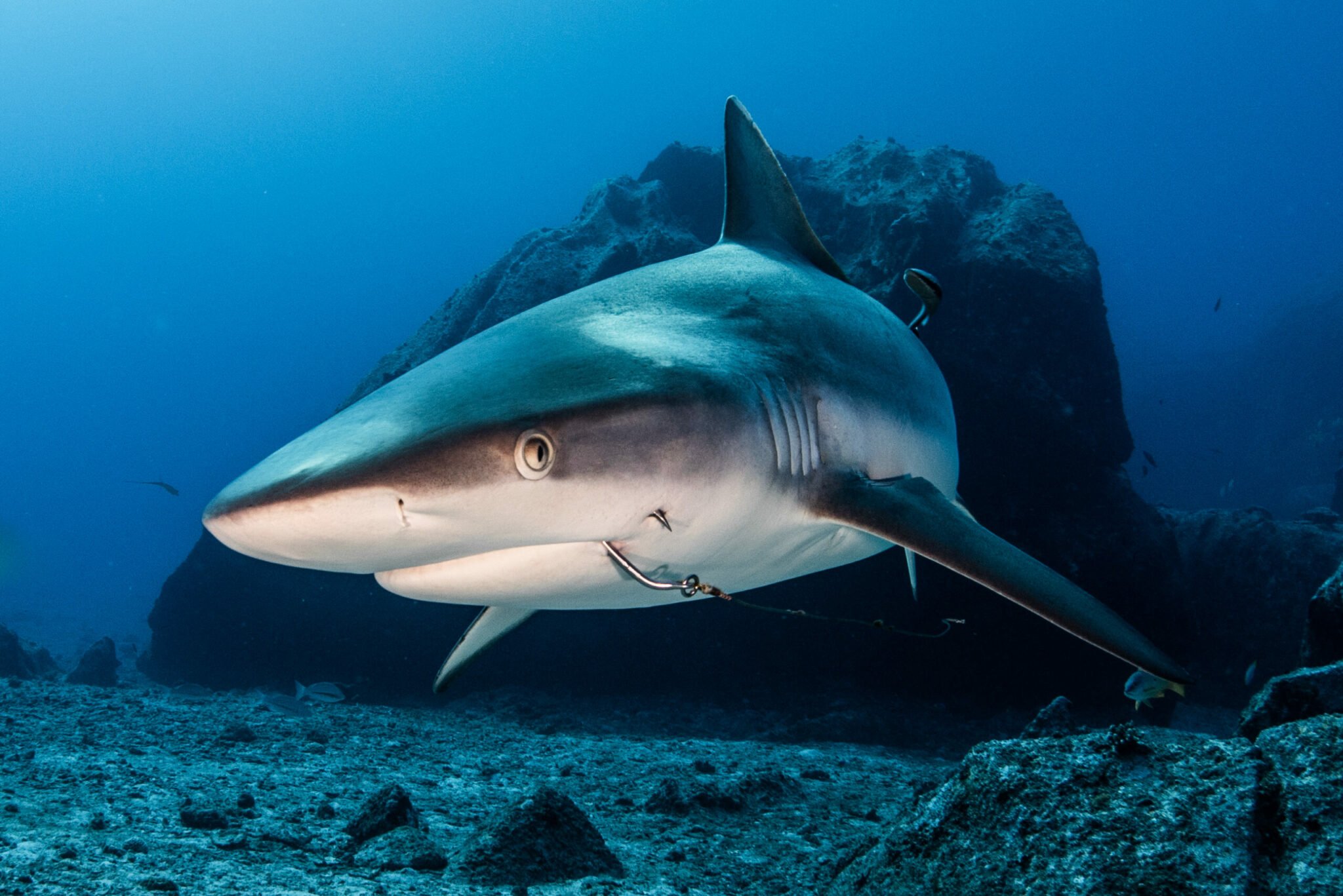Sharks are a group of elasmobranch cartilaginous fish characterized by a ribless endoskeleton, dermal denticles, five to seven gill slits on each side, and pectoral fins that are not fused to the head. Modern sharks are classified within the division Selachii[1] (or Selachimorpha)[2] and are the sister group to the Batoidea (rays. and skates). Some sources extend the term "shark" as an informal category including extinct members of Chondrichthyes (cartilaginous fish) with a shark-like morphology, such as hybodonts. Shark-like chondrichthyans such as Cladoselache and Doliodus first appeared in the Devonian Period (419–359 million years), though some fossilized chondrichthyan-like scales are as old as the Late Ordovician (458–444 million years ago). [3] The earliest confirmed modern sharks (selachimorphs) are known from the Early Jurassic around 200 million years ago, with the oldest known member being Agaleus, though records of true sharks may extend back as far as the Permian.[4]
Sharks range in size from the small dwarf lanternshark (Etmopterus perryi), a deep sea species that is only 17 centimetres (6.7 in) in length, to the whale shark (Rhincodon typus), the largest fish in the world, which reaches approximately 12 metres (40 ft) in length.[5] They are found in all seas and are common to depths up to 2,000 metres (6,600 ft). They generally do not live in freshwater, although there are a few known exceptions, such as the bull shark and the river sharks, which can be found in both seawater and freshwater, and the Ganges shark, which lives only in freshwater.[6] Sharks have a covering of placoid scales (denticles) that protects the skin from damage and parasites in addition to improving their fluid dynamics. They have numerous sets of replaceable teeth.[7]

Sharks are carnivorous predators with diets that vary depending on their species and habitat. Most sharks primarily feed on fish, squid, and crustaceans, while larger species, such as great white sharks, may also hunt marine mammals like seals and sea lions. Some species, like whale sharks and basking sharks, are filter feeders and consume plankton by straining it from the water. Sharks’ hunting techniques range from ambush attacks to high-speed pursuits, demonstrating their adaptability in securing meals across the ocean's ecosystems.
There are twenty-four species of sharks: